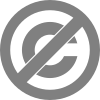
Back Publieke domein Afrikaans Gemeinfreiheit ALS ملكية عامة Arabic ملكية عامة ARZ ৰাজহুৱা ক্ষেত্ৰ Assamese Dominiu públicu AST İctimai mülkiyyət Azerbaijani Gmoafreiheit BAR Грамадскі набытак Byelorussian Грамадзкі набытак BE-X-OLD

Public domain is a phrase that describes something that belongs to all people in general: the public. The public domain contains works (such as books, films, or paintings) that are not under copyright protection.
The opposite of "public domain" is copyrighted material, which is owned either by the creator of the work or their estate. The term public domain is only used to describe things that can be copyrighted, such as photographs, drawings, written articles, books or plays, or similar works of art. As a general rule, all intellectual property works, after enough time has gone by, will become part of public domain. Examples include the works of Leonardo da Vinci, William Shakespeare and Ludwig van Beethoven, and the books of Isaac Newton.
A work can enter the public domain in many ways.
- The copyright expires, many years (usually 50 or 70 years) after its creator dies.
- The work's creator may legally give up all claims to the material.
- The creator does not renew the work's copyright (for works before 1963).
- The work may have been created by agencies of certain governments, in which case it was in the public domain from the time of its creation.
- The work is made by an animal.
- The copyright notice is missing an owner, year or copyright symbol (for works before 1989).

In some cases, if a work enters the public domain after copyright expiration, anyone using the work may still be required to note who created the work. Even if some works are in the public domain due to not being copyrighted, there may be still non-copyright usage restrictions. For examples, even though the design of national currencies may be ineligible, or be unsuitable, for copyright, counterfeiting them for fraud is widely a very serious crime. Another example are logos and images that only have text or simple shapes. These logos aren't copyrighted in the United States, but they are often protected by trademarks.